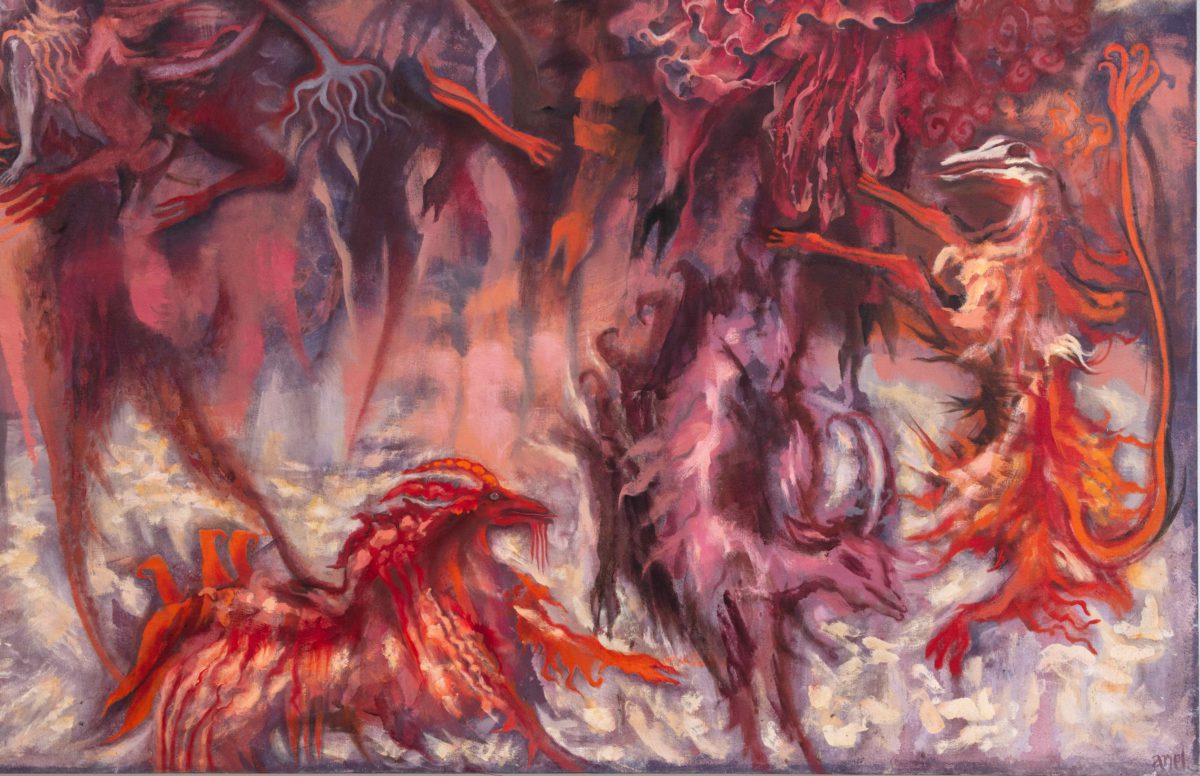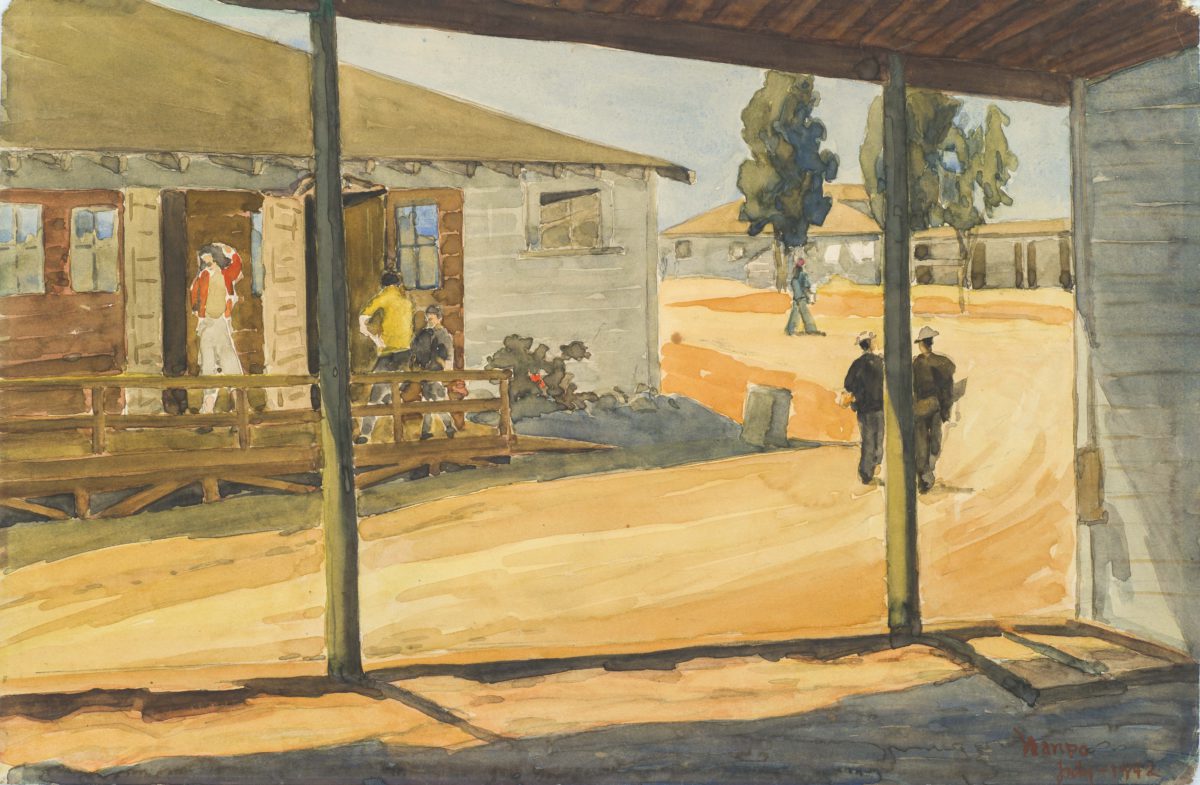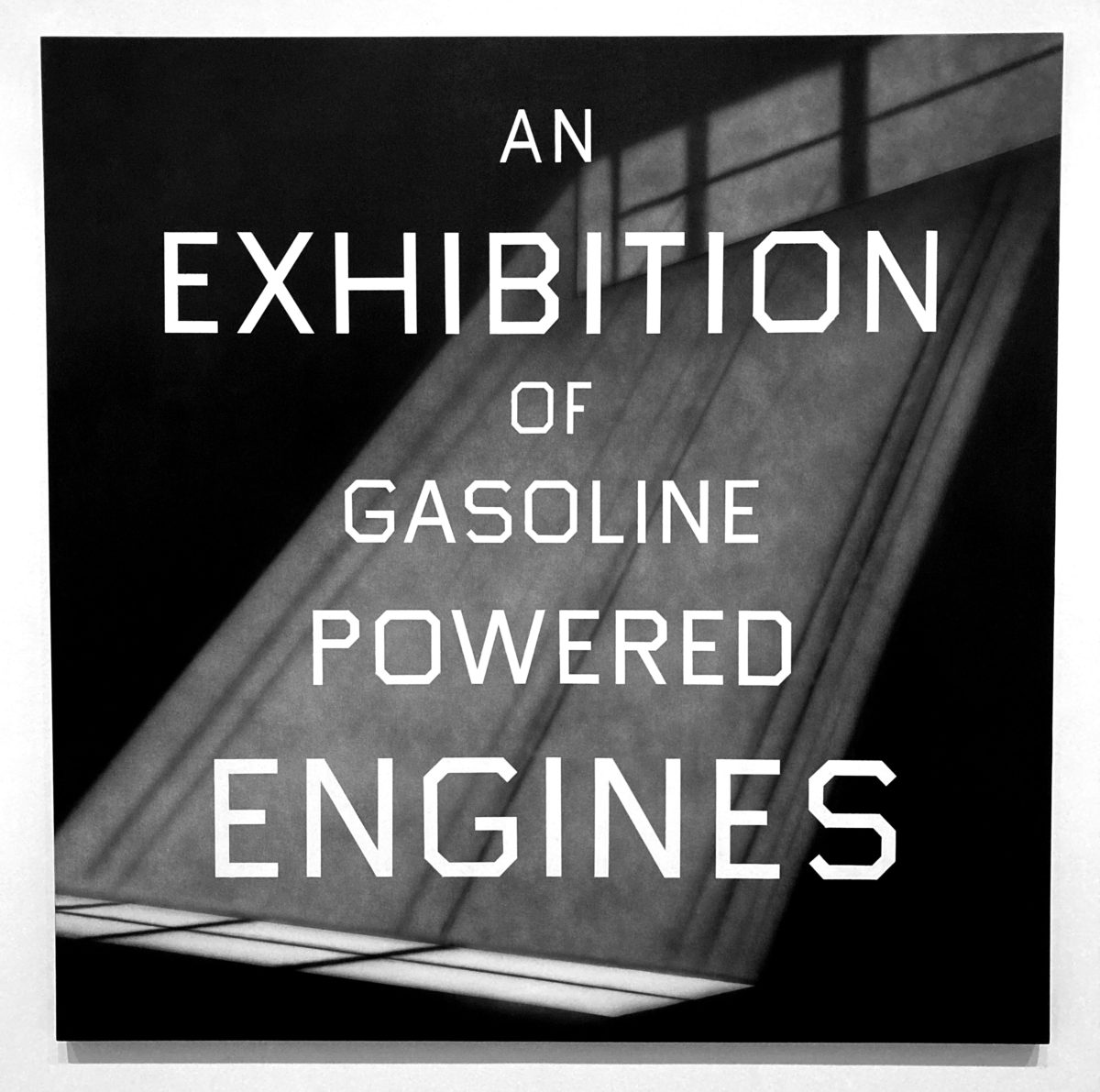“With the Moon Under Our Feet” at the Hansell Gallery
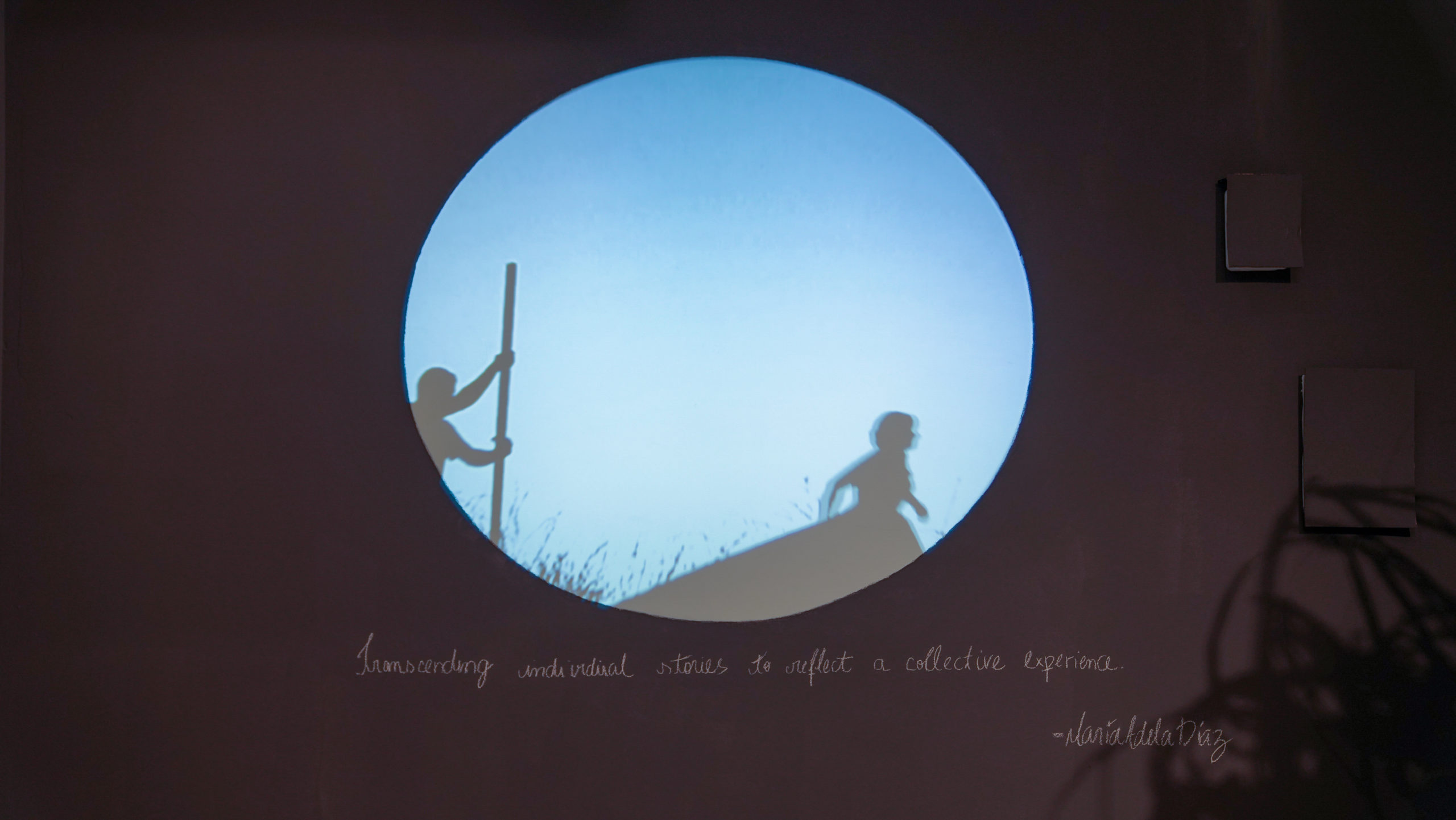
On a recent visit to the Hansell Gallery at the Philosophical Research Society in Los Feliz for the group exhibition “With the Moon Under Our Feet,” I was transported into a sultry, womb-like environment. The gallery contained a mélange of multimedia artworks, woven together like a patchwork of the unconscious. Curated by dama (aka, Amanda Maciel Antunes) in correspondence with their monthly Surrealist Study Group, the show offered a portal into an interstitial realm filled with the murmurs of surreal and mystical feminine energy.
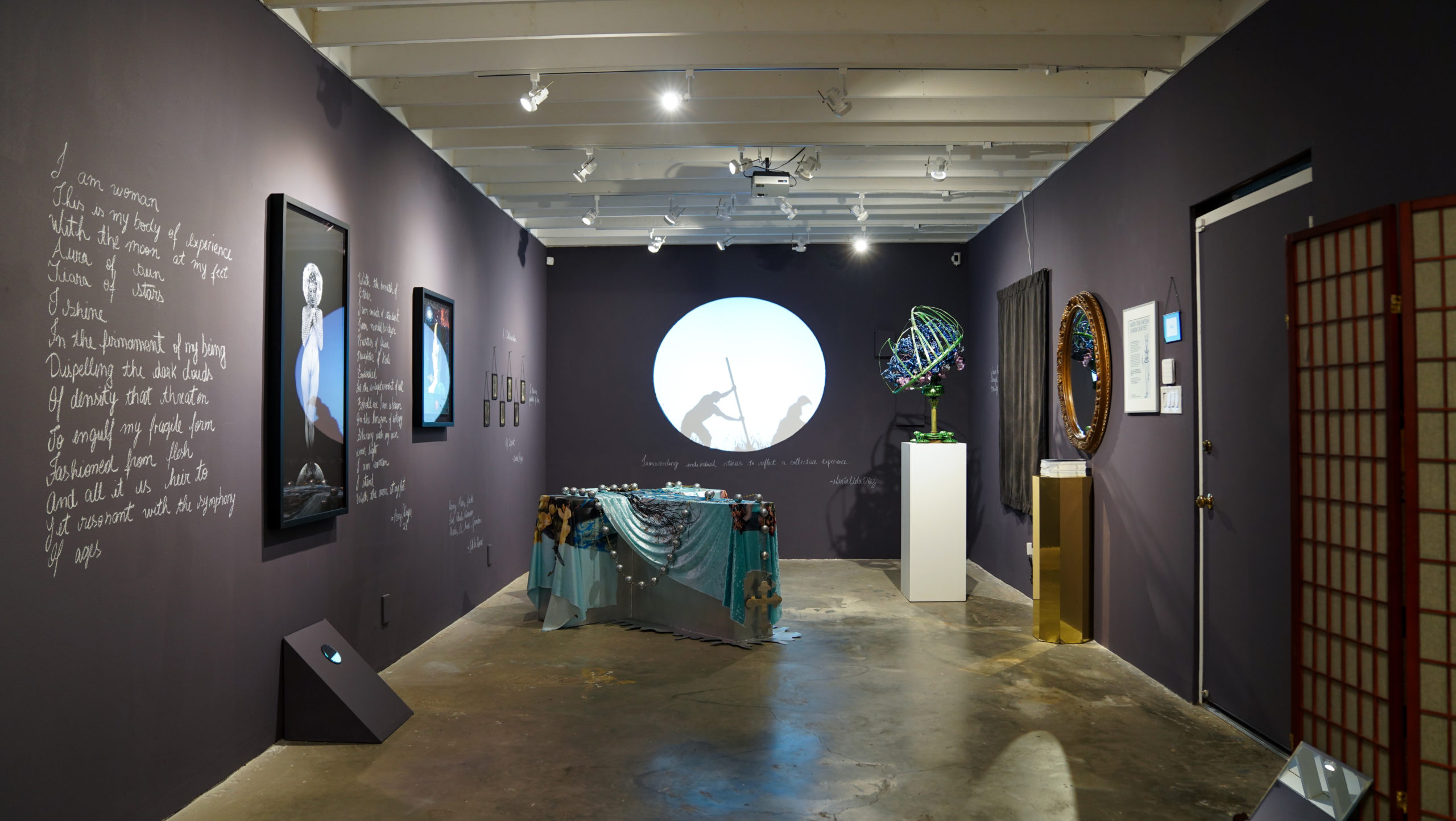
I found the first of these murmurs in Penny Slinger’s With the Moon Beneath My Feet. Known for her mystical and often erotic expressions of feminine liberation, Slinger’s monochromatic photo collage shows a partially nude woman standing with the moon under her feet and a fiery sun behind her veiled head. She is larger than life, with clasped hands and head slightly bowed, in recognition of her body as a vessel of experience and of light. Surpassing mere materiality, she set the tone for the exhibition as a whole.
Next, I found two large, mixed-media sculptures by Regina Herod sitting on pedestals on opposite sides of the gallery. Made from deconstructed materials like a found chandelier and pigmented wax, the sculptures—titled Warrior Rocks Through Eternity and They Want Everything and Nothing—looked like otherworldly guardians surveying their feminine domain. The structural qualities of these arrangements seemed to symbolize, somewhat cryptically, the temperamental chemical makeup of society. Like an alchemist, Herod attempts to incorporate the more volatile, transmutative aspects of the material world into her creations. Seemingly sturdy objects made from steel have been bent and twisted in intricate rebellion, giving way to formations wholly unfounded.
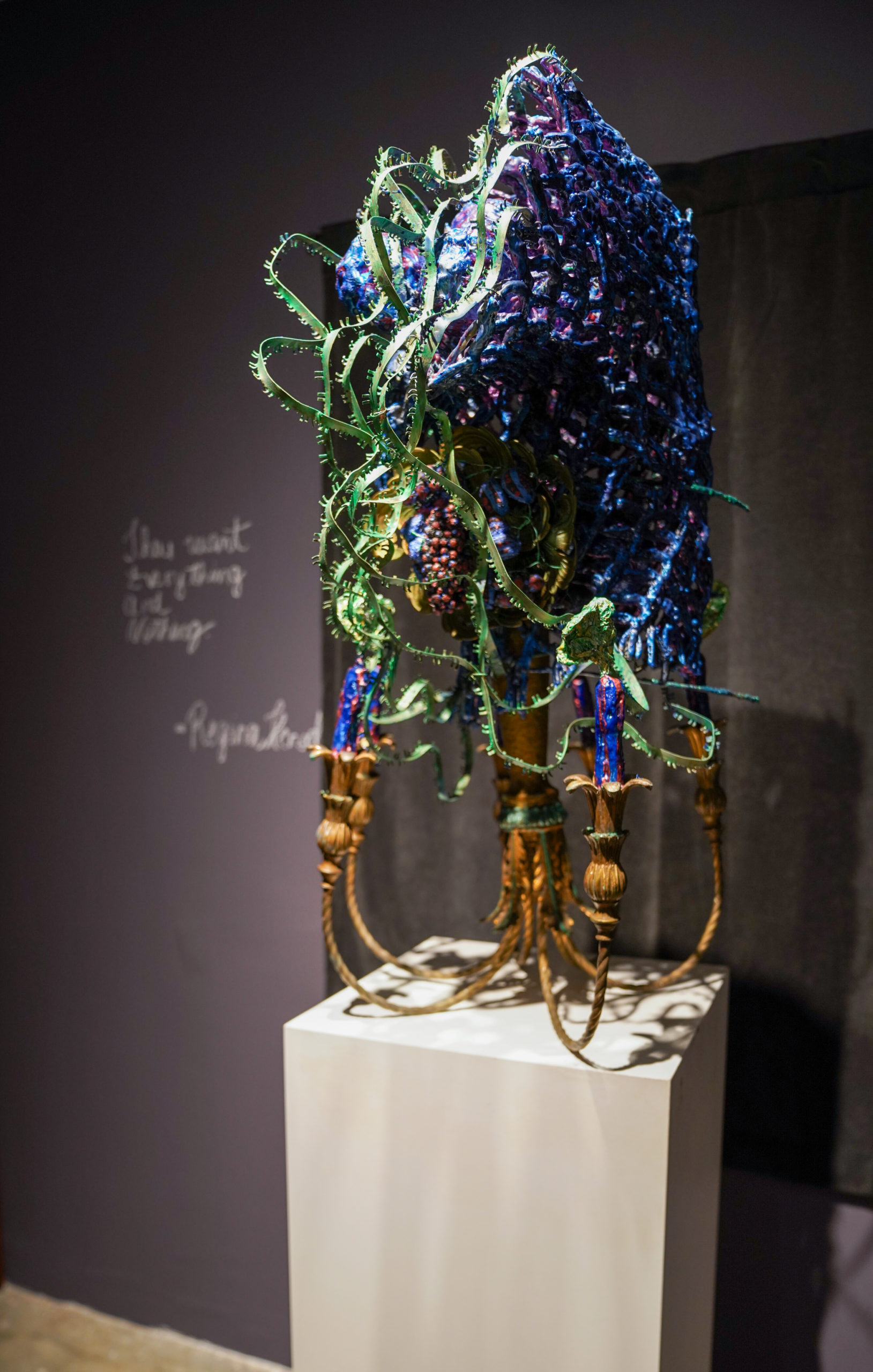
Deposited horizontally at knee height to the right of the entrance, Jaklin Romine’s cross-shaped installation, Orchid/Orquídea-Sunday best/Ropa Formal/Rosary, Mary, Faith, Love, Abuela, Rosario, Maria, Fé, Amor, Grandma, looked like a winged coffin. Romine draped the sculpture in a silky, digitally sublimated fabric and an aluminum rosary in tribute to her late role model, her loving and resilient grandmother, a seamstress.
From the far sides of the room, two large tondos stood adjacent to one another, like twin moons that reflected each other’s light. Unbridled Ambition, a projected video performance installation by Maria Adela Diaz, and Hidden Sister, an elaborate photo and ink collage by Cindy Rehm, address the invisibility of women in contemporary culture by showing obscure perspectives of the female form interacting with nature. Then came Womb Series, a sprinkling of intricate graphite drawings by Sarah Reyes, as well as ethereal photo collages and mixed media-altered books by Lezley Saar.
Together, the works in this show intentionally created what dama has called “a circular experience,” not only in how I negotiated the gallery space, but also in how my mind moved from examination to inquiry to insight and then back again. Unlike typical white-cube settings, many components of the gallery itself were incorporated into the overall experience, serving as an emotional conduit for the individual artworks on display. Strings on the gallery floor meandered like umbilical cords between stations. Artwork titles were inscribed like verses of poetry on the crepuscular gray walls. Slanted mirrors directly beneath the artworks created alternative vantage points and reflections. There was even a soundscape installation—a collaborative project between dama and Adele Bertei titled Fantomette (and inspired by the novel Les Guérillères by Monique Wittig)—that rested discreetly in one corner, emitting chanting sounds that evoked nature’s diurnal and nocturnal qualities.
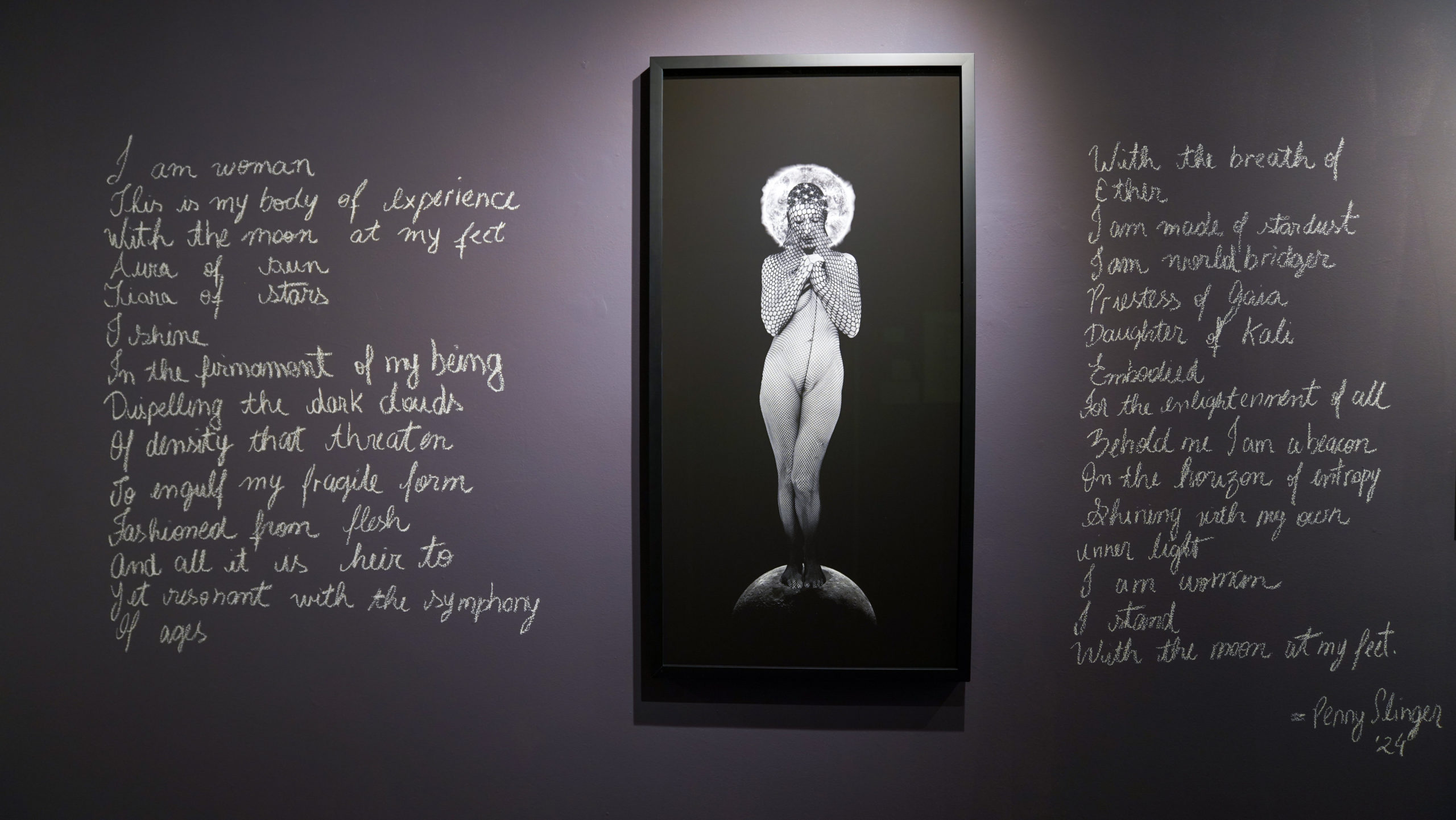
“This show is a song of protest,” dama states in the show’s catalog. “A moment in time. It’s the space in-between.” Even the show’s title appears as a variation of a quote from The Book of Revelation:
1. And a great sign appeared in heaven: a woman clothed in the sun, with the moon under her feet and a crown of twelve stars on her head. 2. She was pregnant and crying out in pain and agony of giving birth. (Revelation 12:1)
This is the ancient goddess Isis, whose mythic wisdom makes her a symbol of the independent female strength permeating the artworks in “With the Moon Under Our Feet.” That this multi-generational mix included both artists recognized by museums and those lesser known, perfectly complemented the show’s underlying intention: to create an experience that transcends social status, convention, and even the constraints of gender and power. In a patriarchal world, female artists have long used the language of surrealism to express their stifled experiences. By accentuating these personal and often painful histories, the exhibit further legitimized the emotional landscape as a relevant form of social dialogue.
Walking away from the PRS campus, I found myself acutely aware of that ludicrous battle still being fought by women artists today: the desire to be truly seen and heard. As elusive clouds dissolved across the approaching darkness, I pondered once more the unresolvable question of what our world would look like had female insight and creativity also been allowed to flourish throughout the centuries.
“With the Moon Under Our Feet”
July 20th – Aug 31st, 2024
Hansell Gallery
Philosophical Research Society
3910 Los Feliz Blvd
Los Angeles, CA 90027


